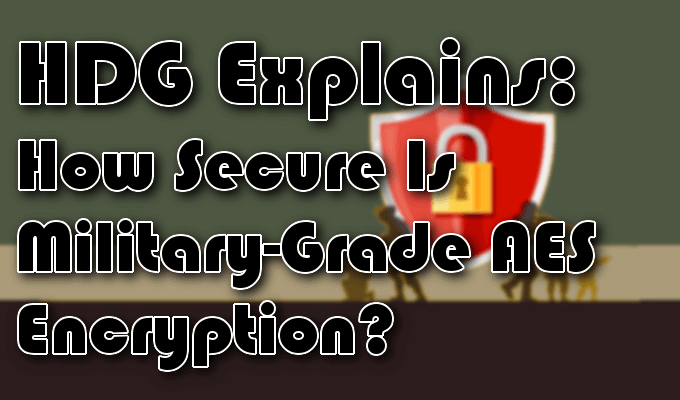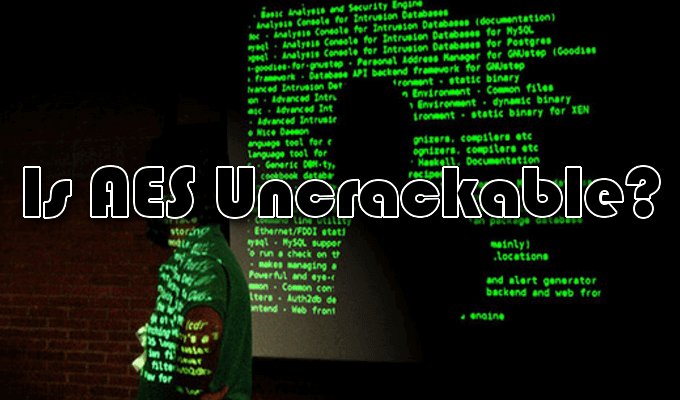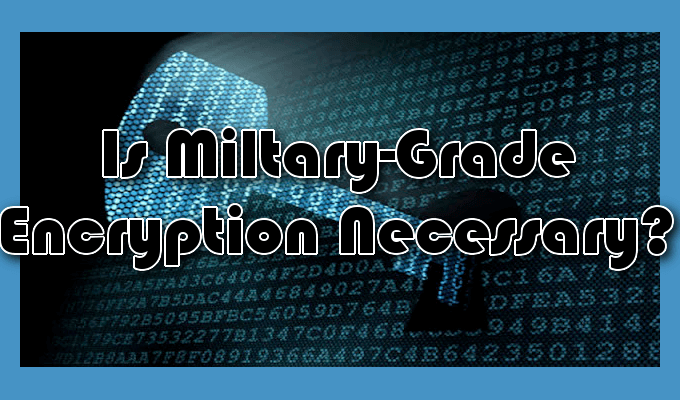We address the elephant in the room
There are plenty of companies that love to claim your data is protected by military-grade encryption. To anyone who is not familiar with tech-savvy jargon, this would sound like an impenetrable vault where your data is never in fear of compromise. After all, if it’s good enough for the military then it must be amazing.
I want to address the elephant in the room, which is ‘military-grade’ doesn’t actually exist. Well, at least not in the way you’d think. When companies use the term military-grade, it’s primarily for marketing and little else. What they really mean is that their company provides Advanced Encryption Standard (AES) 256 encryption.

Even though the military may use the AES encryption algorithm, it was actually the first publicly accessible and open cipher approved by the National Security Agency (NSA) to protect information at a “Top Secret” level. Slapping military-grade onto it only serves to push a sale. So, with that out of the way, we can get on to the important question.
HDG Explains: How Secure Is The Military-Grade AES Encryption Algorithm?
We suppose that before we can dive into the AES-256 encryption algorithm, it might be better to start with what exactly encryption is.
Encryption is basically chopping up information into something incoherent. To unscramble encrypted information would then require a “key” in order to complete the cipher. A cipher is an entire process from start to finish when dealing with either encryption or decryption.

An example of this would be when dealing with websites encrypted with HTTPS. When you attempt to sign in with a password or provide a credit card number, that private data is first encrypted prior to being sent out. This means that only your computer and the website can understand the information. Think of your visit to the HTTPS site as a handshake prior to beginning a private conversation (encryption).
Other Levels Of Encryption
Military-grade encryption is AES-256, which differs from AES-128 and AES-192 by having a larger key size in the AES encryption algorithm. Essentially, AES-256 uses more processing power to encrypt and decrypt information making it more difficult for intruders to crack.
When you hear the term bank-level encryption, it’s pretty much the same thing. The only difference really is that banks tend to use a range of AES encryptions between AES-128 and AES-256.

AES-256 is obviously better, however, AES-128 is still nothing to scoff at. Both are incredibly good encryption protocols for protecting important and private data. You’ve likely been using either or both quite often without even knowing it. The reason being is that AES-256 has been adopted by many different services and software that don’t refer to it as military-grade encryption.
The US military uses the military-grade AES encryption algorithm on two fronts. The first being secret (unclassified) information is specific to AES-128. The second is for top-secret (classified) information, which uses AES-256. Whenever information is handled on both levels through a single entity, AES-256 is adopted as the standard AES encryption algorithm.
Is the AES Encryption Algorithm Uncrackable?
There has yet to be a single instance of AES-256 ever being hacked into, but that hasn’t been for a lack of trying. The first crack attempt at AES was in 2011, against AES-128 encryption where a biclique attack was used. Biclique is around four times faster at attacking encryption than the standard brute force attack seen most often. It failed.

It would take upwards of a billion years for an attack to force its way through a 126-bit key, let alone AES-128. So long as the data encryption has been implemented properly, there is no known attack that would compromise the protection afforded by AES.
256-bit encryption is equivalent to that of 2256 key possibilities. To put this into perspective, we’ll provide an example. Let’s say that one billion supercomputers from all around the world have decided to team up to take down the AES encryption algorithm. We’ll also assume that they can look at 250 keys per second, which is generous seeing as that’d make them capable of approximately one quadrillion keys per second. A year in seconds is around 31,557,600.
So, this means that with a billion supercomputers calculating non-stop for a year, they would only ever be able to check around 275 keys. You’d be looking at a rate of 234 years to look at less than .01% of the entire key possibilities available. You can rest assured, no one is stealing your data anytime soon while protected by AES-256 or, “military-grade encryption”.

How long this protection will last is unknown. It’s almost impossible to determine if and when AES encryption will become obsolete. The National Institute of Standards and Technology created the Data Encryption Standard (DES) which lasted approximately twenty years before it was deemed hackable.
The AES supports significantly larger key sizes than what DES supports meaning that AES has the potential to surpass the twenty-year mark.
Is Military-Grade Encryption Necessary?

There are other encryption algorithms that can do a fine job of securing your personal data. Just know that there are zero industries or services that are one hundred percent immune to an attack. Seeing as most people are not accustomed to giving out their personal information unless it remains secure, services should never apply anything less than the recommended standard. That being AES-256 or otherwise.





